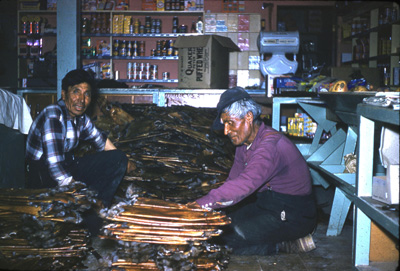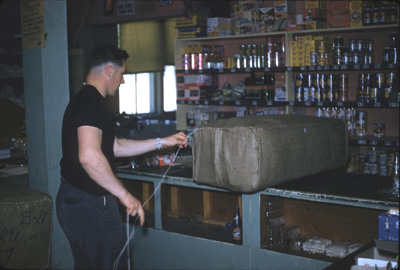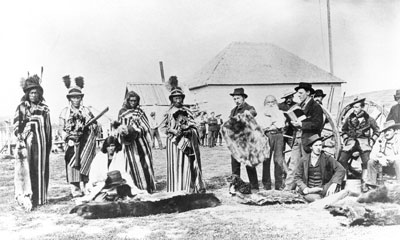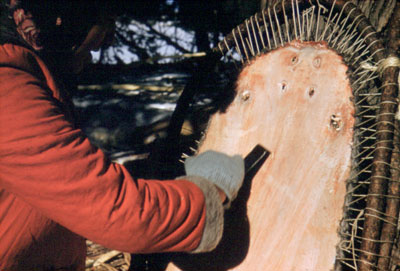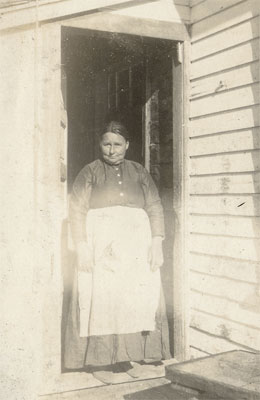Working Life
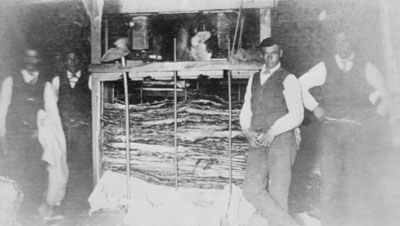
Before they were shipped, furs were compressed in a fur press. Churchill, c 1910.
© Provincial Archives of Manitoba, N20121.
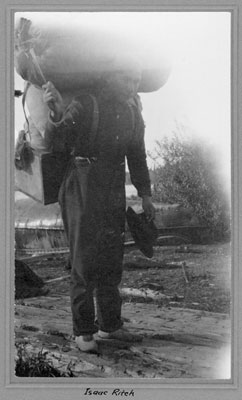
Like his father, William Ritch, Isaac Ritch worked as a labourer for the HBC. His work included hauling wood and supplies, such as in this photograph taken around 1905.
© Archives of Ontario, Duncan Campbell Scott Collection. C 275-1-0-6 (S7581)
The working conditions encountered by men in the fur trade were largely determined by their position within a company as well as the location and size of their posts and the era when they were employed. While there were certainly variations in experience, nevertheless the basic operations of a fur trade post remained remarkably constant over a lengthy period. It was not until the late nineteenth century, when the business interests of the Hudson's Bay Company became more focused on retail, that there was much change in the daily routine of a post and its staff.
The Hudson's Bay Company was a hierarchical organisation with two classes of employees: officers, which included clerks as well as fur traders, and servants, who were labourers and skilled tradesmen. Servants spent much of their time doing heavy tasks such as chopping and hauling wood, taking packets of mail between posts, repairing buildings, processing furs, loading and unloading supply ships, making barrels, fixing tools and guns, and fishing and hunting for provisions. The officer classes were involved with maintaining order, keeping detailed records of daily events in post journals, dealing with correspondence, and overseeing the business of trading with the Aboriginal people who came to the posts with their furs.
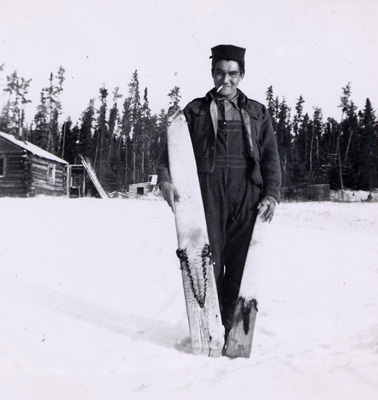
Wooden boards were used to stretch the skins of small animals like mink and otter as demonstrated here by Chris Wesley, from Lac Seul, Ontario, c. 1951.
© Courtesy of Angus Pelham Burn
Working conditions for Aboriginal people attached to a post, whether as contract labourers or as suppliers of fur, fish and game, also remained quite constant. Hunters who the Hudson's Bay Company supplied with an 'outfit' – the necessary supplies for surviving in the bush and securing animals, e.g. ammunition and some provisions –were expected to return later in the year with their furs, and this system continued for three centuries. Aboriginal women were also heavily involved in the day-to-day running of fur trade posts, and often worked as seamstresses, washerwomen or cooks. By the mid-nineteenth century, many of the Hudson's Bay Company's contract staff were 'country-born' sons of officers and their Aboriginal wives. Those who had received some schooling, perhaps in Scotland, were able to attain posts as apprentice clerks. Many others were hired as labourers or interpreters. Mutually beneficial relationships between Aboriginal peoples and fur trade employees were crucial for the smooth operation of all aspects of the fur trade. Although some of these interactions were certainly more respectful and equitable than others, Aboriginal people were never simply passive producers of fur and consumers of trade goods; their contributions were essential factors in the expansion of the fur trade industry.
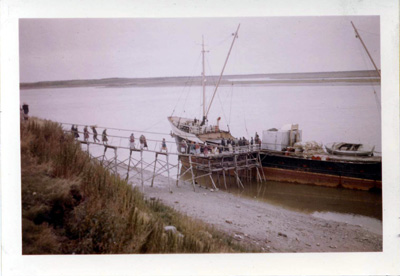
When the supply boat arrived, all hands were required to load and unload quickly. This photograph shows the 'Fort Severn' in the early 1960s.
©Courtesy of John Stoddart

